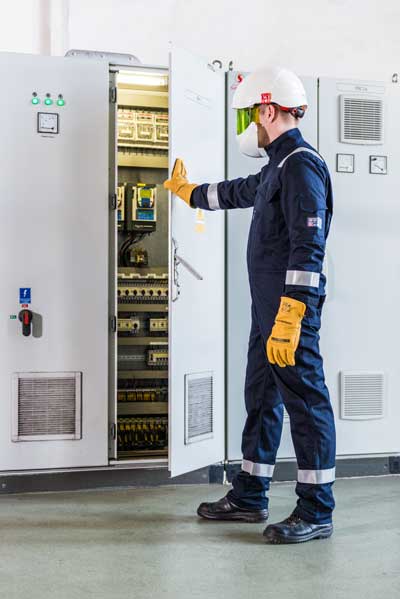Hamilton Smith, technical sales manager at arc flash protective wear specialist ProGARM, explains the dangers.

An arc flash happens when an electrical discharge travels through the air – as a result of voltage spikes, worn connections, cable strikes or gaps in insulation. The flash is capable of causing serious harm to anyone caught by it, but here are some of the less known facts about an arc flash and the damage they can cause:
01. Although there are many complex reasons an Arc Flash occurs, they can also be caused simply by a rodent, tool or a component in the breaker area, which compromises the distance between energised components. This means you never truly know if you’re at real risk or not, so you should always ensure you are protected against an arc flash incident.
02. An arc flash can produce some of the highest temperatures known to occur on Earth. The heat released in the initial blast of an electrical arc can reach over 25,000oF, which is four times as hot as the surface of the sun.
03. All known materials are vaporised at this temperature, which causes an expansion of air. The blast pressure waves are so powerful they can throw a worker across a room.
04. An arc flash is not simply a burst of intense heat and light: it is also incredibly powerful. During an arc flash incident, copper expands to 67,000 times its volume. The arc sprays droplets of molten metal moving at over 700mph, which can penetrate a worker’s body up to 3m away.
05. The extreme temperature of an arc flash combined with the blast pressure waves can ignite a worker’s clothes 3m away from the initial blast.
06. An arc flash blast can have a sound level of 140dB at 0.6m from the arc. A sound this loud can result in long-term hearing loss.
07. The light generated from an arc flash can cause temporary and sometimes permanent blindness.
08. Although the exact number of arc flash incidents is unknown, researchers have concluded that around 10% of electrical injuries are caused by an arc flash, not just a simple electric shock.
09. Industries at most risk of arc flash incidents are generally those in continuous operation such as rail, power generation, utilities and construction.
For more information on the risks of arc flash and how to protect your workforce, visit www.progarm.com/arc-flash-protection/ or call 01482 679600

